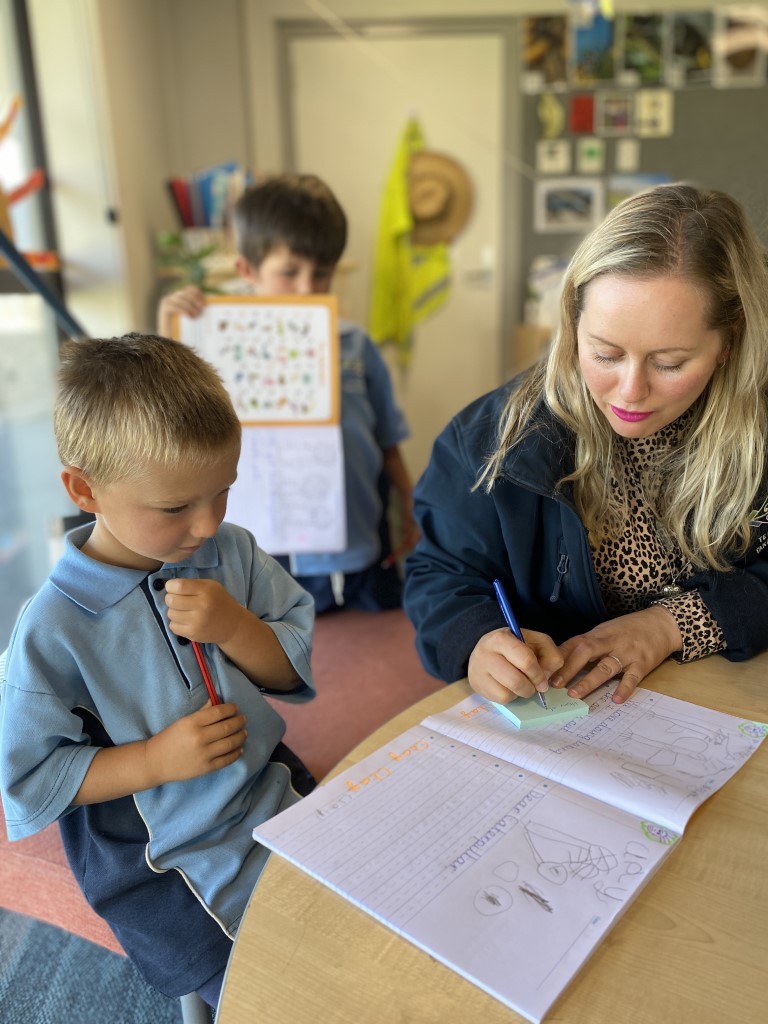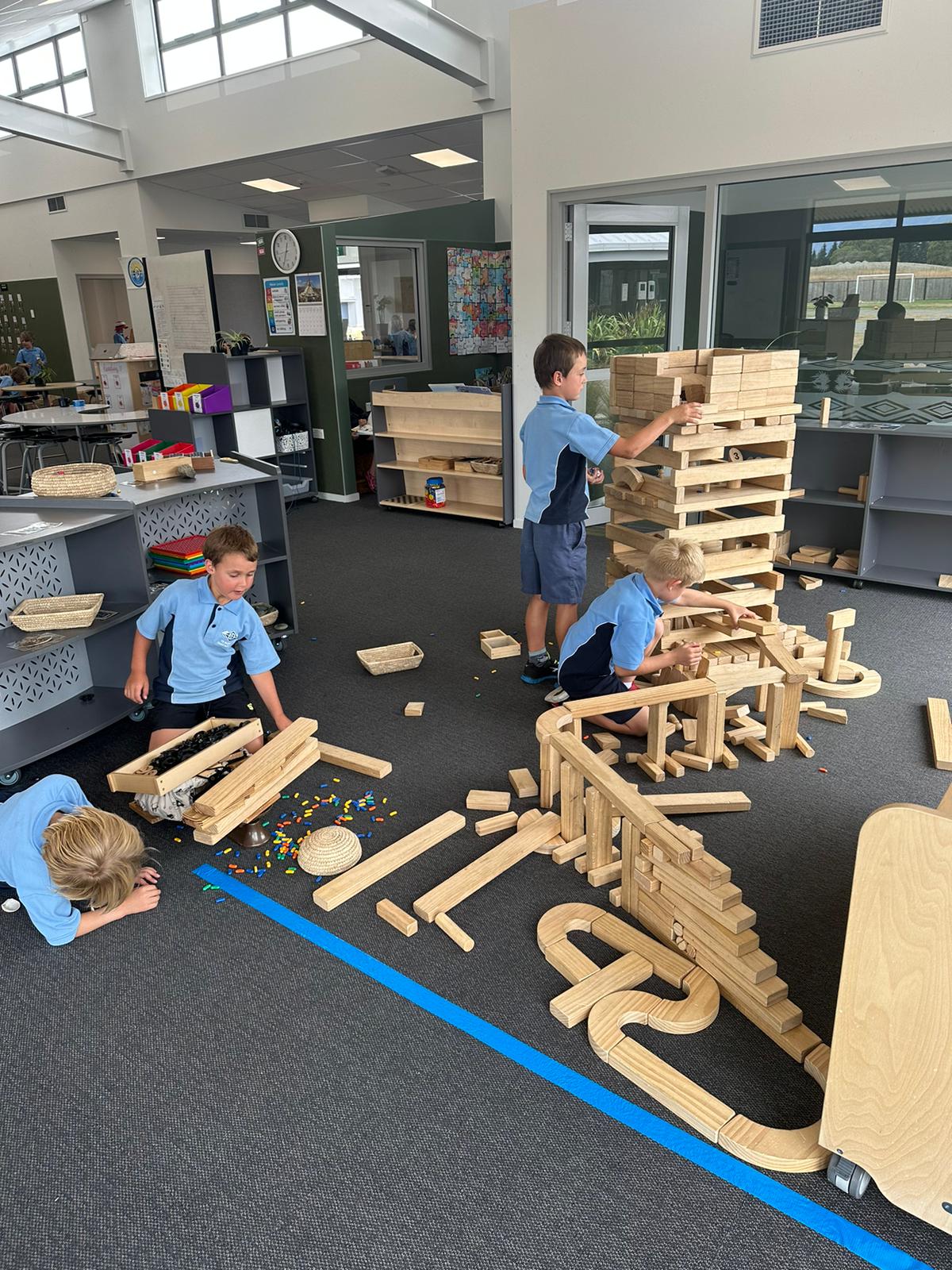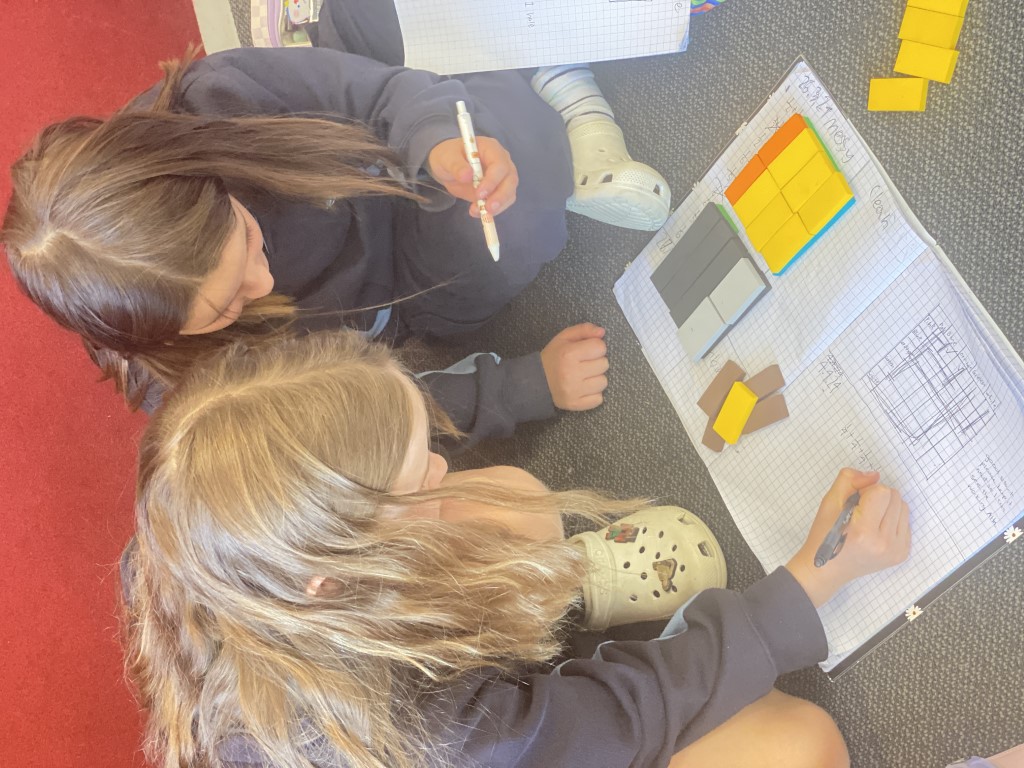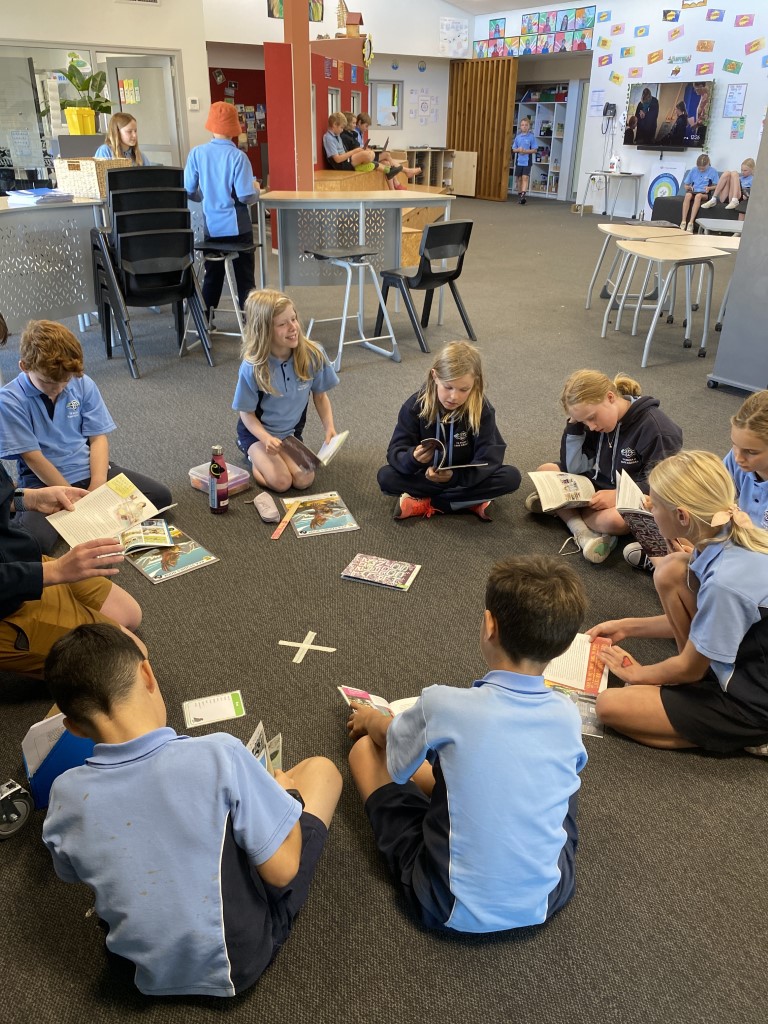Our learning spaces are what the Ministry of Education have called ‘Modern Learning Environments’ or ‘Flexible Learning Environments’ and now ‘Innovative Learning Environments’ (ILE). These spaces are created to maximise learning opportunities and allow children to learn in different ways and in different settings.
Why the change?
Education has changed significantly in recent times; a student’s ability to problem solve, be creative, work collaboratively and show resilience are just as important in the curriculum as their ability to remember information, follow instructions or complete tasks.
Classrooms / learning spaces are now much more active places, providing students not only with the opportunity to learn new things, but to also put that learning into action through investigations, inquiries and real life projects.

The importance of temperature control, ventilation, lighting and acoustics. Quality acoustic environments provide a range of different acoustic zones to allow for the quiet, conversational and noisy activities that happen through the course of the day.

The amount of flexibility provided so its not fully open (big barn) or fully closed (individual classroom). Environments that are flexible are able to create larger and smaller spaces by using moveable walls, agile furniture, sliding doors, breakout spaces as and when it is needed for different learning purposes.

Accommodating for the different ways in which people learn. There are a range of different zones and breakout spaces – quiet focused zones, collaboration zones, active learning zones, spaces that will allow for specific learners or learning needs. Within these spaces, different furniture also supports the different ways people learn – individual desks, chairs, stools, standing tables, leaners, kneeling tables, circular tables etc.

A strong connections with the outdoors. Good sightlines, transparency and openness and the ability to work seamlessly between indoor and outdoor activities have been planned for.

Allowing for teachers to work together. There are greater opportunities for teachers to use each other’s strengths, provide collegial support and professional learning and for students to develop meaningful connections with other teachers as well as still having a strong relationship with their key teacher.
Design precedents + Key themes / Narratives
Inspiration has been drawn from the elements and materials of the wider region and environment to create a design with a local sense of place.
Learning happens not just in the classroom but outdoors too, incorporating fun and interactive learning where children can work collaboratively, be creative and problem solve in the natural environment.
Bike park – Naturalistic playground – Compass – Covered outdoor learning spaces – Reading huts – Nursery shade house – Connecting with community partners.
The outdoor environment reflects the cultural narrative and link to traditional Māori play. There are physical and visual links to tikanga Māori and Tuakana teina.
Building names – Tuna seat – Naturalistic playground – Pou
Our outdoor spaces are designed to promote community interactions and opportunities for whānau and community experts to be working alongside the children.
Cafe – Outdoor kitchen and raised veggie gardens – nursery seed house – Ampitheatre
Features in the outdoor spaces contribute towards a sustainable future and are used for education and to allow children to be active science citizens in their own learning environments.
Planting corridor – Water tank – Solar panels – Beehive – Tunnel house